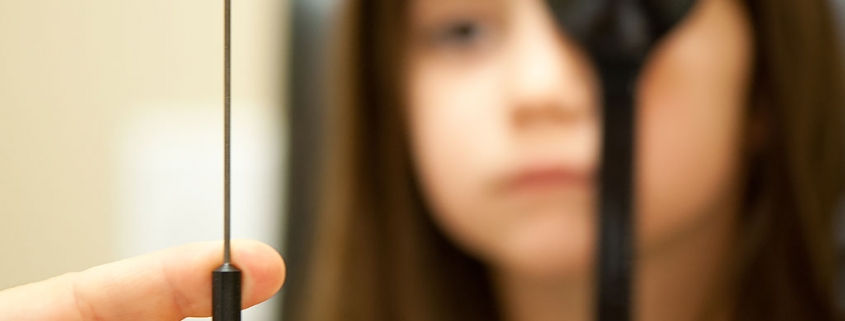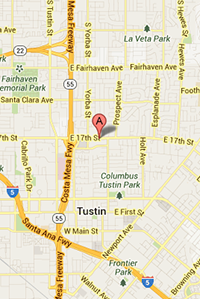
Clear vision is not the only factor to achieve comfortable vision. Equally important is when your eyes efficiently work together. In vision therapy, we train the eyes to better coordinate while reading and performing other vision tasks. An example of such therapy is training to achieve proper eye alignment or the ability to move the eyes smoothly together in all directions.
Why Vision Therapy?
Our brain, specifically our trigeminal nerve, senses when our eyes are out of alignment and compensates to help improve coordination. All of this compensation can cause symptoms such as tired eyes, headaches, neck pain, and discomfort in the eyes (asthenopia). These symptoms can create a barrier between a child and learning.
A variety of methods are used to help correct these vision-related issues. These include the standard methods of glasses or contact lenses, prisms, or over/under correcting lenses. Prisms can be prescribed in glasses that bend light and allow for comfortable vision when your eyes are not aligned normally. Over or under- correcting lenses serve to relieve or stimulate accommodation (focusing).
The first step in any therapy program involves assessing a child’s vision to maximize their clarity. Prescription lenses are often used prior to nitrating vision therapy.
Vision therapy at Be Kids is a fun, rewarding experience that improves your child’s ability to coordinate their eyes and remove any barriers affecting their ability to succeed.
When Vision Therapy?
Physical Cues
Headaches or dizziness associated with near work
Blurred or double vision
Words blurring on the page after prolonged reading
One eye turning in or out (strabismus)
Lazy eye (amblyopia)
Head tilting, closing or covering an eye
Performance Cues
Difficulty tracking while reading
Difficulty copying/drawing shapes
Letter reversals
Difficulty copying from the board
Misaligning digits when doing math
Difficulty tracking/catching the ball in sports
Poor visual memory
Takes an excessive amount of time to complete homework
Letter or word reversals
Poor handwriting
Medical Diagnosis
Convergence insufficiency
Accommodative insufficiency
Oculomotor dysfunction
Strabismus
Amblyopia
Visual processing problems
Diplopia
Visual deficiencies masking as dyslexia

